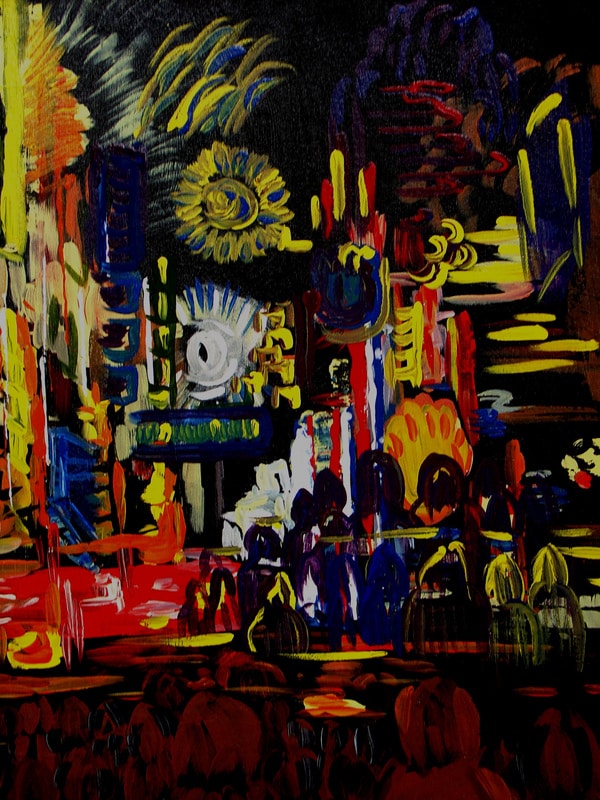
Bathe in New Light | The City in Art
By Dr. Mark David Major, AICP, CNU-A
Neon, noun, ne·on, ˈnē-ˌän – a colorless odorless mostly inert gaseous element that is found in minute amounts in air and used in electric lamps. From the Greek, neuter of neos new, first Known Use: 1898.
Art is rarely or merely about the physical representation of the thing but instead about light, shadow and reflection as represented in counter pose to the physical reality of the thing itself.
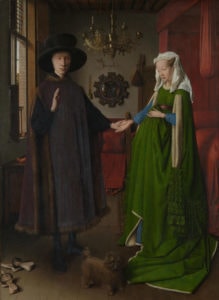
This is a widespread tradition that can be traced back to long before Modernism with artists such as Leonardo da Vinci, Caravaggio, and Jan van Eyck. For example, Jan van Eyck’s The Arnolfini Portrait (1434, National Gallery, London) where the artist paints his own reflection in the mirror located on the back wall behind his subjects (see below).
In Under Neons, Harbert paints the city as bathed in neon light, as if physicality of the thing itself did not have an objective existence until awash in shadows and reflections birthed by the light itself. In the same tradition as Georgia O’Keefe’s Radiator Building-Night, New York (1927) and Harbert’s The Blue City (2012), the artist encourages us to see the city in a new and different way; not merely as a physical entity but also as an abstract reality bathed in its all-consuming light. This is given urgent power by the artist through the use of primary colors (reds, yellows, and blues) and blacks/whites, which hint at Piet Mondrian’s famous abstract paintings of New York. However, the control and preciseness found Mondrian’s abstract formalism is sacrificed in favor of a kinetic energy – of vibrant motion – painted in the light and dark of the city. Of course, Under Neons immediately suggests the city we most associate with neon spectacle: Las Vegas. However, this could be any city. This could be our city, given life anew in the light.
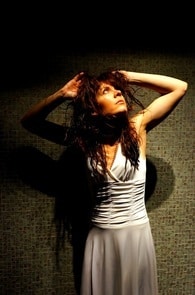 About Rejcel Harbert
About Rejcel Harbert
Rejcel Harbert has over ten years of experience as the owner of Art by Rejcel, where she sells photographic services, paintings, and abstract and expressionistic acrylic arts. She received her bachelor of arts in business, economics, and Spanish from Jacksonville University in 2001. She is a member of the Business Fraternity Alpha Kappa Psi, the Honor Society Phi Kappa Phi, and received an award from the Women’s Business Organization for Achievement. Ms. Harbert does religious volunteer work including construction and repair work for community members in need. For more information on Art by Rejcel, visit www.rejcel.com.
The City in Art is a series by The Outlaw Urbanist. The purpose is to present and discuss artistic depictions of the city that can help us, as professionals, learn to better see the city in ways that are invisible to others. Before the 20th century, most artistic representations of the city broadly fell into, more or less, three categories: literalism, pastoral romanticism, and impressionism, or some variation thereof. Generally, these artistic representations of the city lack a certain amount of substantive interest for the modern world. The City in Art series places particular emphasis on art and photography from the dawn of the 20th century to the present day.

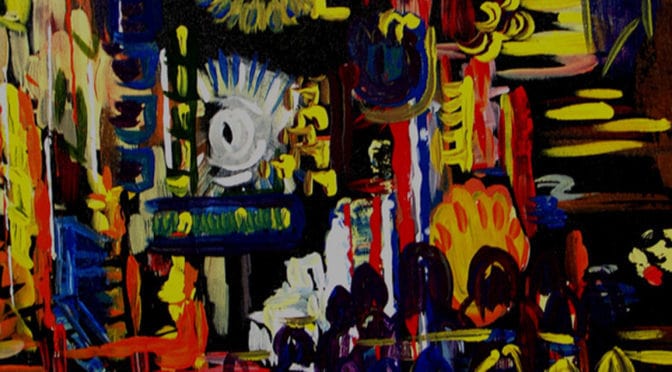
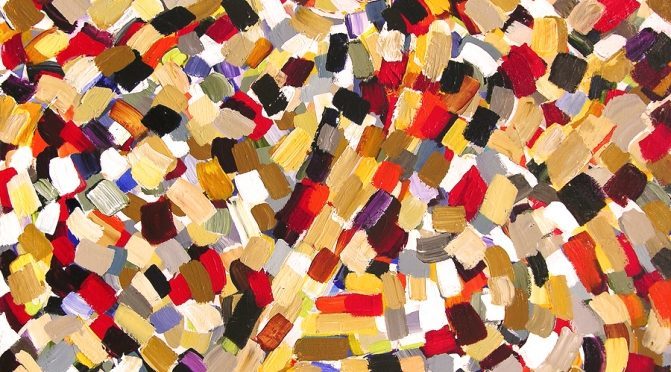
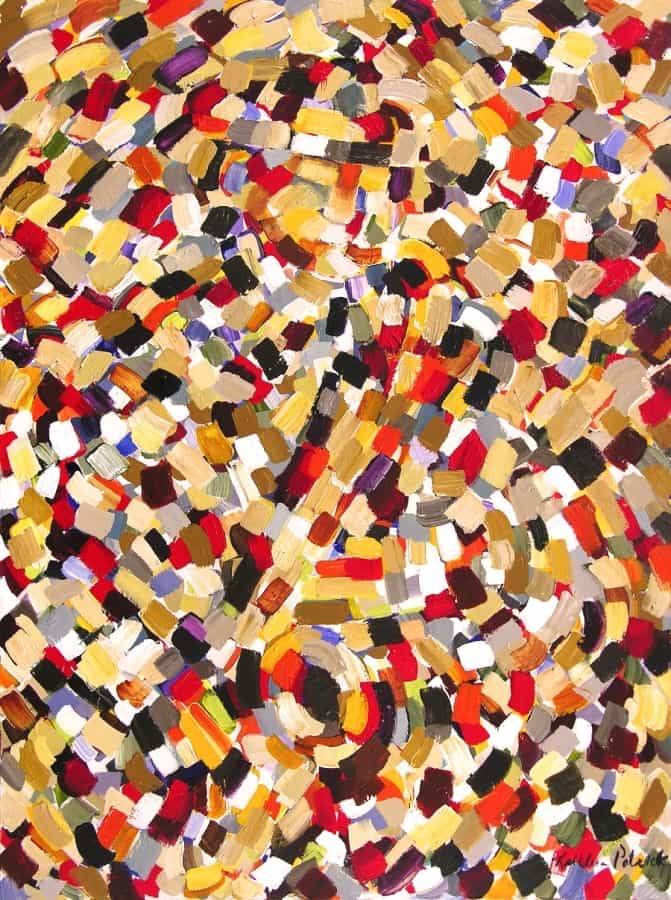

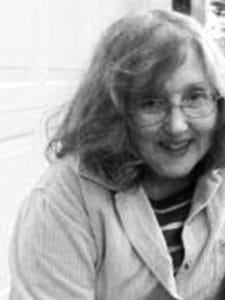 About Kathleen Patrick
About Kathleen Patrick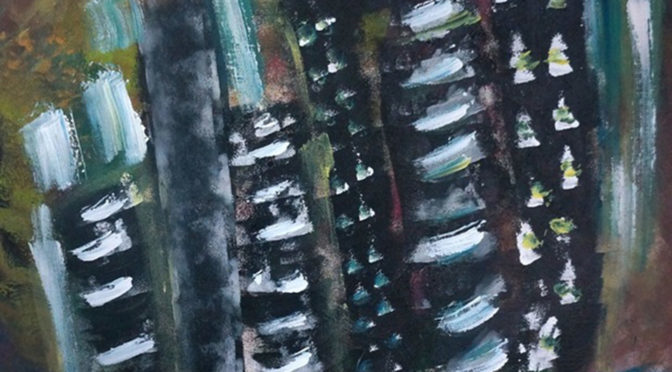
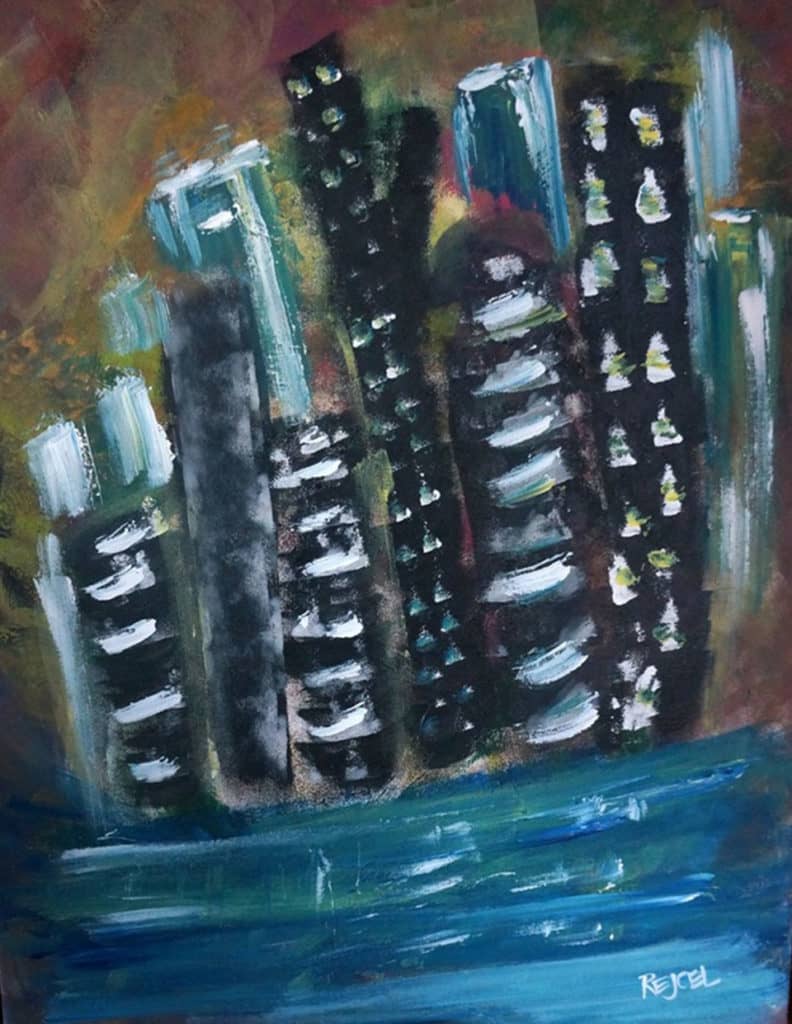
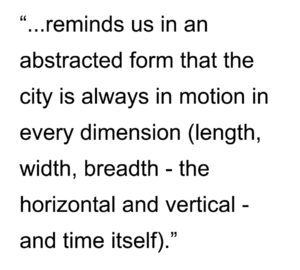 There is an eternal attribute about the city that Harbert captures in depicting a waterfront city at dusk. The onset of dusk is indicated both by the colors of the painting’s background and the use of white in representing the internal lights of the buildings, much in the same way as Georgia O’Keefe’s Radiator Building-Night, New York (1927). In The Blue City, the lights of the city buildings are abstractly reflected in the water at the base of the painting. There is a vibrancy of color contrasted between the upper (reds, browns, and greens) and lower portions (blues, whites, and greens) of the painting. The Blue City reminds us in an abstracted form that the city is always in motion in every dimension (length, width, breadth – the horizontal and vertical – and time itself). In this sense, Harbert captures something about the eternal dynamic of motion in the city. When it comes to the existential being of the city, we may not see it from afar – for example, as we gaze at the skyline of a city – but motion is an essential fact of the thing itself.
There is an eternal attribute about the city that Harbert captures in depicting a waterfront city at dusk. The onset of dusk is indicated both by the colors of the painting’s background and the use of white in representing the internal lights of the buildings, much in the same way as Georgia O’Keefe’s Radiator Building-Night, New York (1927). In The Blue City, the lights of the city buildings are abstractly reflected in the water at the base of the painting. There is a vibrancy of color contrasted between the upper (reds, browns, and greens) and lower portions (blues, whites, and greens) of the painting. The Blue City reminds us in an abstracted form that the city is always in motion in every dimension (length, width, breadth – the horizontal and vertical – and time itself). In this sense, Harbert captures something about the eternal dynamic of motion in the city. When it comes to the existential being of the city, we may not see it from afar – for example, as we gaze at the skyline of a city – but motion is an essential fact of the thing itself.